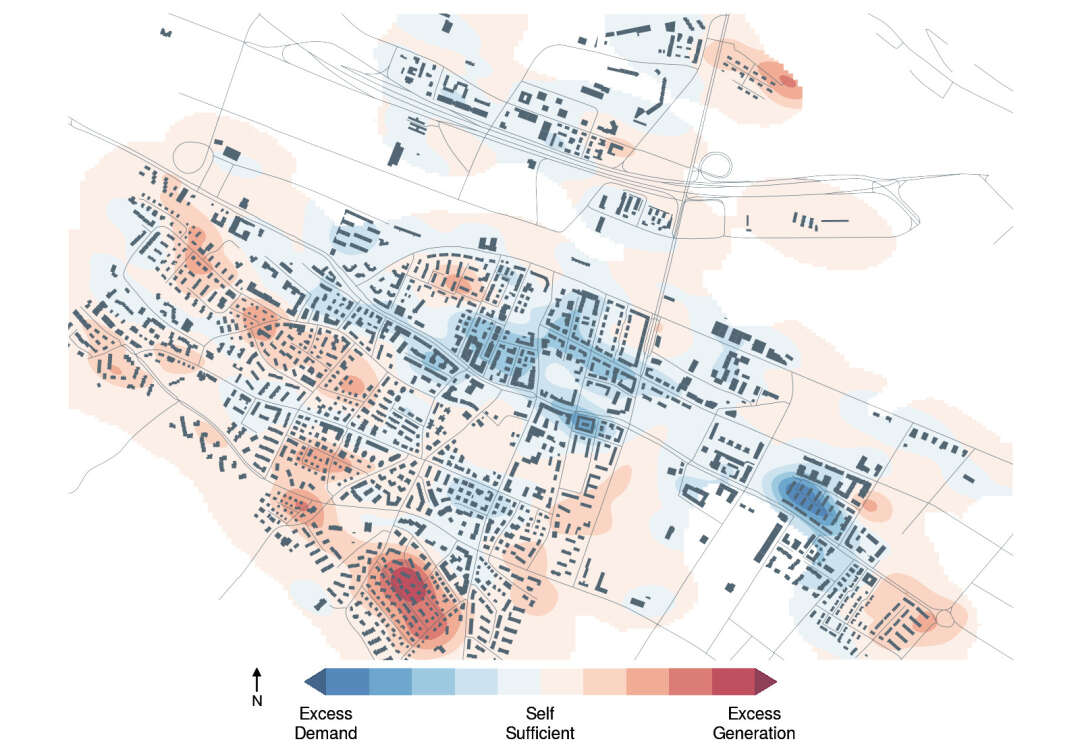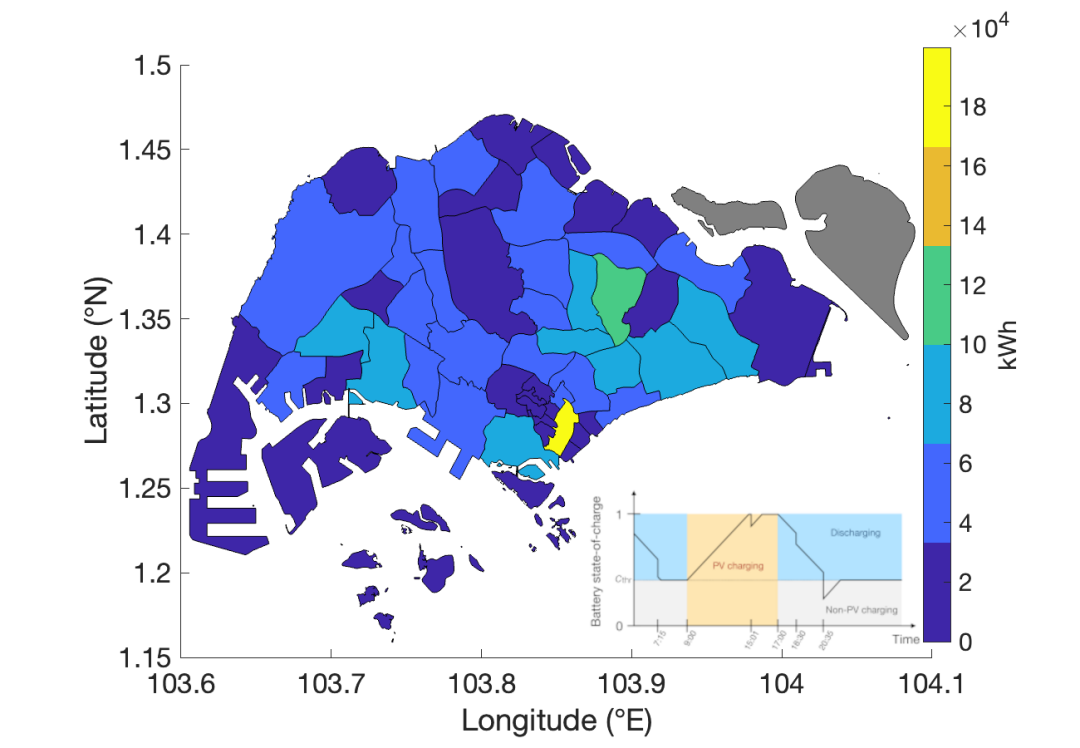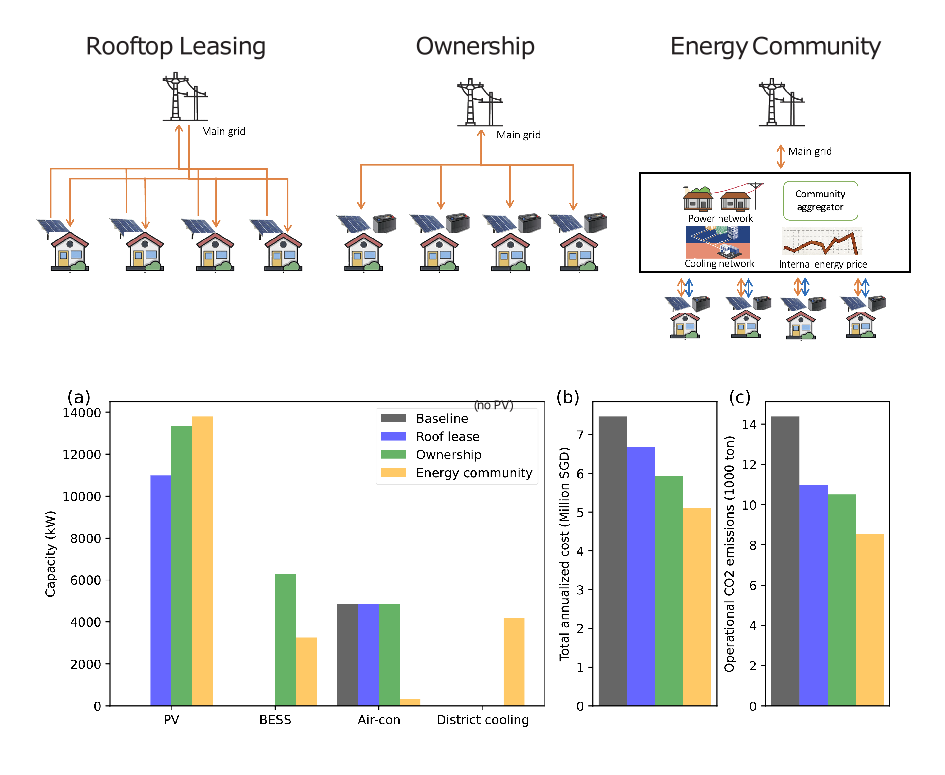The “Powering the City” (POW) research module finds architectural, technical, infrastructural, and socioeconomic solutions to a large-scale urban decarbonization by increasing solar energy production on buildings. In our module, we do not simply evaluate the presence, but rather pursue a life cycle perspective projecting consequences of dynamic decisions into an uncertain future characterised by climate change, population growth, and a phase-out of environmentally detrimental fossil-fuels. Placing solar photovoltaics (PV) on buildings as a central element in our research, we ask questions such as: What are optimal building renovation pathways? What synergies for PV emerge from coupling the electricity, thermal, and mobility sectors? Which role does energy policy play in achieving our environmental targets and how much can we rely on business innovation? Let’s find out!
LIVE CYCLE
Much attention is currently drawn to the reduction of operational carbon emissions and replacing fossil-fuels with renewables such as solar photovoltaics (PV). However, as for many human-made objects, the manufacturing of PVs is a material-hungry and energy-intense process and comes with a significant resource-backpack: farming quartz sand and the growing of Silicon-ingots, slicing wafers and producing solar cells, and finally mounting the panels on-site. Compared to the emissions associated with the burning of fossil-fuels, PVs still have an incredibly low per kWh-of-electricity emissions rate. Nevertheless, we are interested in ways to lower the embodied emissions incurred in the manufacturing of PV. One strategy is to produce PVs in regions with an already high share of renewable energy, and not where the power grid is still heavily relying on oil and coal.

Photovoltaics (PV) are not just “green” and sustainable; they come with a backpack of materials and embodied emissions incurred during their manufacturing. This Sankey diagram shows the influential processes (in %) in the Single Silicon wafer production if produced in a European power grid. It becomes apparent that manufacturing PVs becomes more environmental if also “green” electricity is used in their production. EU-produced Monocrystalline solar panels are estimated at 250 kgCO2eq/m2 embodied emissions. Assuming standard test conditions and a lifetime of 20 years, this translates to an equivalent of 62.5 g of CO2eq/kWh of PV electricity. Comparing it to the 900 g CO2eq/kWh of coal electricity, this sounds like a really good deal! Even when comparing it to the 2022 average grid emissions in Switzerland of 125 g CO2eq/kWh (due to nuclear and hydro).
ENERGY DESIGN
Modern societies would be unimaginable without energy and our demand for it seems to be increasing without limits. However, our planetary boundaries inevitably require a worldwide revolutionization of the current infrastructure towards a next generation sustainable energy landscape composed of low-carbon renewable generators, such as solar Photovoltaic (PV). A major difference to conventional power plants is the decentralization and democratisation that PV as a technology offers, allowing us to turn every household equipped with solar panels from being a mere consumer towards becoming a grid-contributing prosumer. In “Powering-the-City” we develop models for sustainable building designs and optimized urban retrofitting roadmaps. Leveraging these models allows us to study and propose possible solutions for low-carbon solar cities.

Where we need electricity might not always coincide with where we can generate it efficiently. The figure shows the difference between local building electricity demand and local solar electricity generation potential for the district of “Altstetten” in Zurich. Spots with low differences (“Self Sufficient”) indicate that we can approximately generate as much solar electricity as we need, high positive differences (blue) indicate that we require more than we can locally produce, and high negative differences (red) indicate that we produce more solar electricity than we locally require. On a larger scale, such an analysis can support the planning of solar neighbourhoods and advanced energy communities (ZEV: Zusammenschluss zum Eigenverbrauch”).
MOBILITY
The transport sector is a major polluter, thus governments worldwide are advocating for the electrification of mobility through electric vehicles (EVs). To help reduce carbon emissions, these EVs should be charged by renewable energy sources such as solar photovoltaic (PV). In fact, EVs are seen as a key technology to support the integration of variable renewable energy into the power grid, as their batteries can be used bi-directionally to temporally store superfluous electricity (during times of abundant sunshine) and discharge it back to the grid during times of high demand but low renewable energy supply. We leverage location-based services (LBS), i.e., data from mobile phones, for an advanced prediction of mobility patterns and charging demand, as well as optimization and machine learning methods to optimize urban infrastructure and EV charging schedules.

In regions with high existing solar energy grid penetration, the mismatch between demand and supply can lead to a problematic phenomenon known as the “duck curve”: It describes the discrepancy between renewable production and actual electricity demand. Latter typically surges towards the evening, which unfortunately also coincides with the time when sun sets and solar production halts. Therefore, this mismatch needs to be compensated by a sudden ramp-up of alternative (fossil-fuel based) generators, thus causing strains to the grid. The concept of using EVs for bi-directional charging is known as Vehicle-to-Grid (V2G). V2G can flatten the duck curve, as it offers controllable flexibility to the grid. The figure shows our estimations of the local energy supply by V2G in Singapore. The district shown in yellow is Downtown and offers the highest potential due to the many EVs frequenting here.
SOCIOECONOMICS
The “Not-in-my-backyard” response towards renewable energy causes people to prefer environmentally detrimental sources such as coal or gas over windmills and PV farms as long as the plant is out of their sight. With a sensitive architectural integration of PV into buildings, we can conciliate the request towards an aesthetic and culturally appropriate urban transformation. Also, PVs can have a much wider influence on society as some might expect: the technology leads to a democratization of energy, where each household can produce and sell surplus electricity to their communities. This entails the need for novel business models, supportive energy policies, and suitable market instruments that foster such solar energy communities, where energy needed is generated, stored, converted and traded locally, thus reducing strains on the national power grid.

How does a smart organization of solar energy influence the decision making in the private sector to invest into PV? Energy sharing in solar communities, local self-consumption, and smart operation of battery electric storages can all significantly improve the profitability of distributed energy resources (DER). Furthermore, different business models have consequences on risk assessment and return-of-investment and should be chosen depending on the context: Is it better to lease your roof to a utility at little risk, or is direct ownership the better model? What are the overall benefits of organizing neighbourhoods into energy communities and which market mechanisms (such as dynamic internal prices) are necessary? The figure shows the differences of various solar business models in Singapore and compares optimal DER capacities, system cost and operational emissions.
PHOTOVOLTAICS
PV are one of the key technologies in a decarbonized energy landscape. By exploiting a physical phenomenon known as the photovoltaic effect, PV cells can convert sunlight into electricity without emitting any CO2. In contrast to conventional fossil-fuel based generators which are more efficient the larger they are, PVs can be deployed efficiently in all scales, from large solar farms to solar-powered smart watches. Contrasting to common belief, PVs do not have to come in the standard blue/black colours, which are often perceived as not aesthetically pleasing. In fact, PVs do not any longer need to be accepted as standard products. On the contrary, we embrace them as a novel design material that offers new forms of architectural languages of the “Post Anthropocene”.

PV as creative design material with high aesthetic potential, instead of a standard engineering product. The modules in this figure are the results of the Building Integrated Photovoltaics (BIPV) Workshop at ETH, during which students had the opportunity to freely assemble, glue, cut, laminate, solder and play with these materials, while creating new future visions of solar architectures and PV applications.
Cycles and Districts / [POW] Powering the City
Principal Investigators: Prof. Dr Arno Schlüter, Assoc. Prof. Dr Francis Bu-Sung Lee
Co- Investigators: Roger Boltshauer, Assoc. Prof. Dr Yuming Fu, Assoc. Prof. Dr Alexander Hollberg, Asst. Prof. Dr Markus Schläpfer, Prof. Dr Tien Foo SingResearchers Collaborators: Ayca Duran, Dr Alina Galimshina, Maximilian Gester, Dr Illias Hischier, Dr Jidong Kang, Dr Shin Woei Leow, Justin McCarty, Prof. Dr Renate Schubert, Dr Jiazu ZhouStudents: Polikseni Bano, Gregory Bianchi, Nina Bichsel, Alex Borgesi, Dominic Caviezel, Hong Jun Chew, Chen Chiu, Mason deVarti, Argyrios Grammatas, Pit Mathieu, Nikolaos Politis, Rino Sogno, Shannon Tan Xin Yi, Rebekah Vecchiarelli, Yufei Zhang
ModuleCoordinator: Dr Christoph Waibel





